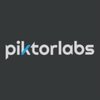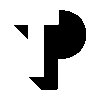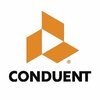750 Piktorlabs Jobs

Software Architect I
Piktorlabs
posted 7hr ago
Job Role Insights
Flexible timing
Key skills for the job
Job Description
Leverage expertise in a technology area (e.g. Big Data Cluster) and responsible for Architecture for small to mid size projects.
Outcomes:
- Design and develop the framework; be the technical owner for a project in one technology area
- Guide and review technical delivery by internal teams
- Resolve design issues and deliver/own design for a complex module for projects of the following nature: architecture enhancements small sized development and maintenance projects
- Review design and code ensuring adoption of industry best practices
Measures of Outcomes:
- Number of reusable components / processes developed
- Number of times components / processes reused
- Delivery efficiency (Adherence to UST defined principles)
- Contribution to technology capability development (e.g. Training Webinars Blogs)
- Customer feedback on overall technical quality (zero technology related escalations)
- Number of white papers/document assets contributed to
- Relevant technology certifications
- Business Development number of proposals contributed to as applicable)
- Feedback from Project Team/Program Management on project support
Outputs Expected:
Solution Definition & Design:
- Define Architecture for small/mid-sized type of projects
- Design the technical framework and implement the same
- Identify and conduct design of complex sub-components /module in collaboration with project team
architects and client SME - Present the detailed design documents to relevant stakeholders and seek feedback
- Undertake project specific Proof of Concepts activities to validate technical feasibility with guidance from the Application Architect
- Implement best optimized solution and resolve performance issues
- Support the team in the design of functional modules and review deliverables
- Conduct code reviews
Requirement gathering and Analysis:
- Understand the functional and non-functional requirements
- Collect non-functional requirements (such as response time
throughput numbers
user load
etc.) through discussions with SMEs and business users - Identify technical aspects as part of story definition
especially at an architecture / component level
Project Management Support:
- Share technical inputs from Agile/project planning perspective with SCRUM Master / Project Manager
- Help SCRUM Masters / Project Managers to understand the technical risks and come-up with mitigation strategies
- Help developers overcome technical challenges
Technology Consulting:
- Analysis of technology landscape
process and tools based on project objectives
Business and Technical Research:
- Understand application architecture and its criticality to: analyze and assess tools (internal/external) on specific parameters
- Understand application architecture and its criticality to: Support Architect/Sr. Architect in drafting recommendations based on findings contained within Proof of Concept
- Understand application architecture and its criticality to: analyze and identify new developments in existing technologies (e.g. methodologies
frameworks
accelerators
etc.) - Understand application architecture and its criticality to: document the new developments (e.g. report
white paper
national/ international publications) to build team capabilities.
Project Estimation:
- Provide support for project estimations for business proposals and support sprint level / component level estimates
- Articulate estimation methodology and module level estimations for more standard projects with focus on effort estimation alone
Proposal Development:
- Contribute to proposal development of small to medium size projects from technology/architecture perspective
Knowledge Management & Capability Development:
- Conduct technical trainings and webinars to impart knowledge to relevant application development/ project teams
- Create collaterals (e.g. case study
business value documents
summary
etc.) - Post in blogs / interviews to share expertise
- Gain industry standard certifications on technology and architecture consulting
- Contribute to knowledge repository and tools
- Creating reference architecture model
reusable design patterns and mining reusable components from the project - Partner with UST Gamma to create curriculum
assessments; etc.; conduct training - Create KT Packages for new team members
Testing Support:
- Suggest unit test automation strategies using appropriate frameworks
Process Improvements / Delivery Excellence:
- Identify avenues to improve project delivery parameters (e.g. productivity
efficiency
process
security
etc.) by leveraging tools
automation
etc. - Understand various technical tools used in the project (third party as well as home-grown) to improve efficiency
productivity
Audit:
- Conduct cross project technical audits and reviews
across multiple accounts
as required to check adherence to architecture
design and coding best practices
Skill Examples:
- Use domain/ industry knowledge to understand business requirements. Create POC to meet business requirements under guidance
- Use technology knowledge to analyse technology based on clients specific requirement analyse and understand existing implementations. Work on simple technology implementations (POC) under guidance guide the developers and enable them in the implementation of design into working software in the technology
- Use knowledge of Architecture Concepts and Principles to provide inputs to the practitioner towards building component solutions and deploy the solution as per the architecture under guidance
- Use knowledge of Design Patterns Tools and Principles to create low level design under guidance from the Architect for the given business requirements Review low level design created by team for maintainability (error handling ing etc.) of design define technical checklists for design and coding
- Use knowledge of Software Development Process Tools & Techniques/Scrum tools to increase productivity and develop efficient code. Constantly check for reusability of codes design and develop complex assets and provide technical consultancy related to these areas
- Use knowledge of Project Management Tools and Techniques to provide inputs in project management activities (e.g. reporting reviewing documents audit compliance reports providing status). Raise concerns within own area of work in a timely manner and implement the same under guidance
- Use Project Governance Framework to facilitate communication with the right stakeholders and Project Metrics to help them understand their relevance in project; and to share inputs on project metrics with the relevant stakeholders for own area of work
- Use Estimation and Resource Planning knowledge to help estimate and plan resources for specific modules / small projects with detailed requirements in place
- Use Knowledge Management Tools & Techniques to participate in the knowledge management process (such as Project specific KT). Consume and contribute to the knowledge management repository
- Use knowledge of Technical Standards Documentation & Templates to understand and interpret the documents provided
- Use Requirement Gathering and Analysis knowledge to analyse requirements (functional/ non -functional) and functionality raise clarifications/ambiguities create requirement documents (such as traceability matrix bridge documents etc.) under supervision. Provide inputs/ create estimates and solutions (based on the size of the project) create design documents identify impacted areas based on the change requests understand the data and model the requirements based on requirements
- Use Solution Structuring knowledge to understand the proposed solution. Provide inputs to create draft proposals/ RFP (including effort estimation scheduling resource loading etc.)
Knowledge Examples:
- Domain/ Industry Knowledge: Basic knowledge of standard business processes within the relevant industry vertical and customer business domain
- Technology Knowledge: Working knowledge of sub-portion in a technology area related to own area of work (e.g. Java/JEE 5+ Microsoft technologies or Mainframe/legacy); sub-set of frameworks (Struts JSF Hibernate Spring) etc. sufficient enough to implement end-to-end application related to own area of work; low level details such as data structures algorithms within one technology stack; configuration parameters for successful deployment within one technology stack
- Architecture Concepts and Principles: Basic knowledge of standard architectural principles models patterns (e.g. SOA N-Tier EDA etc.) and perspective (e.g. TOGAF Zachman etc) integration architecture including input and output components existing integration methodologies and topologies source and external system non functional requirements data architecture deployment architecture and architecture governance
- Design Patterns Tools and Principles: Working knowledge of design patterns principles patterns and tools
- Software Development Process Tools & Techniques: Specialized knowledge of SDLC process (Agile and Traditional) SDLC methodology programming principles best practices (refactoring code code package etc.)
- Project Management Tools and Techniques: Basic knowledge of: project management process (such as project scoping requirements management change management risk management quality assurance disaster management etc.) tools (MS Excel MPP Client specific time sheets capacity planning tools etc.)
- Project Management: Basic understanding of project governance structure awareness of basic project metrics like effort and defect quality metrics
- Estimation and Resource Planning: Working knowledge of estimation and resource planning techniques (e.g. TCP estimation model) UST specific estimation templates
- Knowledge Management Tools & Techniques
- Basic knowledge of industry knowledge management tools (such as portals wiki) UST and customer knowledge management tools techniques (such as workshops classroom training self-study application walkthrough and reverse KT)
- Technical Standards Documentation & Templates: Basic knowledge of various document templates and standards (such as business blueprint design documents and test specifications)
- Requirement Gathering and Analysis: Demonstrates working knowledge of requirements gathering for ( non functional) requirements analysis for functional and non functional requirement analysis tools (such as functional flow diagrams activity diagrams blueprint storyboard) techniques (business analysis process mapping etc.) and requirements management tools (e.g.MS Excel)
Employment Type: Full Time, Permanent
Read full job descriptionPrepare for Software Architect roles with real interview advice
What people at Piktorlabs are saying
What Piktorlabs employees are saying about work life
based on 12 employees
Flexible timing
Monday to Friday
No travel
Day Shift
Similar Jobs for you
Share an Interview






























